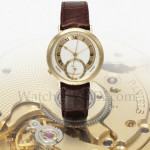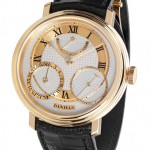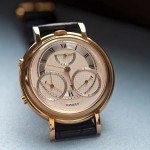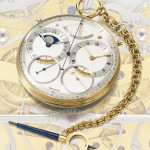Hands-On with the Epic George Daniels “Spring Case” Tourbillon Wristwatch
A one of a kind masterpiece.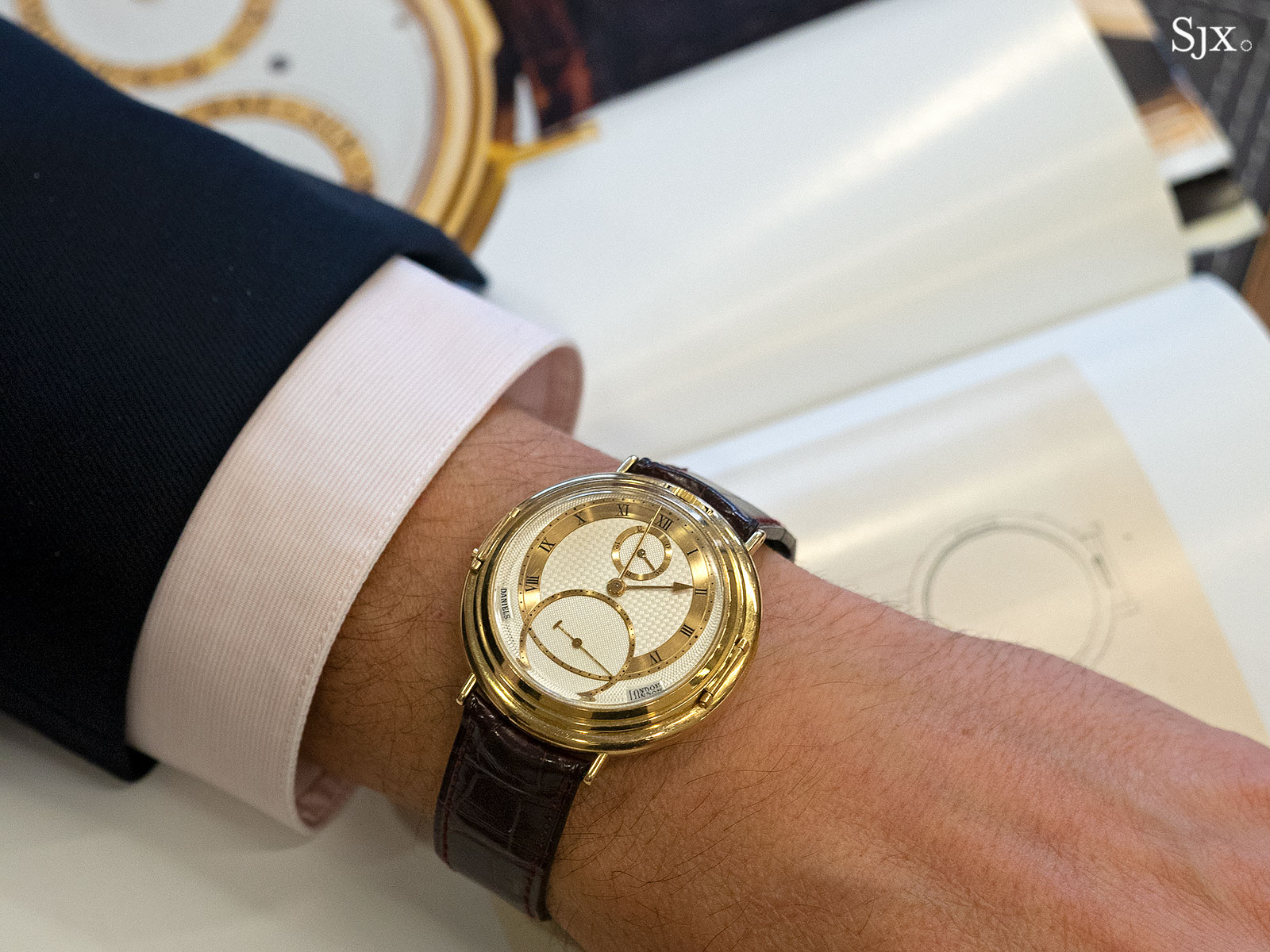
George Daniels is best known for inventing the Co-Axial Escapement now used by Omega, and also for his magnificent pocket watches, including the landmark Space Traveller. He is equally well known for his limited edition wristwatches, namely the Millennium and Anniversary Watch, both done with the help of his protege Roger W. Smith.
The late Mr Daniels, however, also made – entirely and by hand – two unique wristwatches that are significantly more complicated and arguably more important than the serially produced watches (there were also two later, oblong case wristwatches made under the Daniels name by Roger Smith). The first was the Four-Minute Tourbillon Wristwatch of 1991, which was sold at Sotheby’s in 2012 for £385,250, or US$617,594. It was a tremendous amount of money then, but in hindsight appears to have been a bargain for the watch that now resides in London.
The second wristwatch Mr Daniels made is nicknamed the Spring Case after its clever swivelling case. This was finished by Mr Daniels in 1992, but he only gave up the watch over a decade later when he sold it to the former owner, who in turn sold it to the current owner not too long ago.
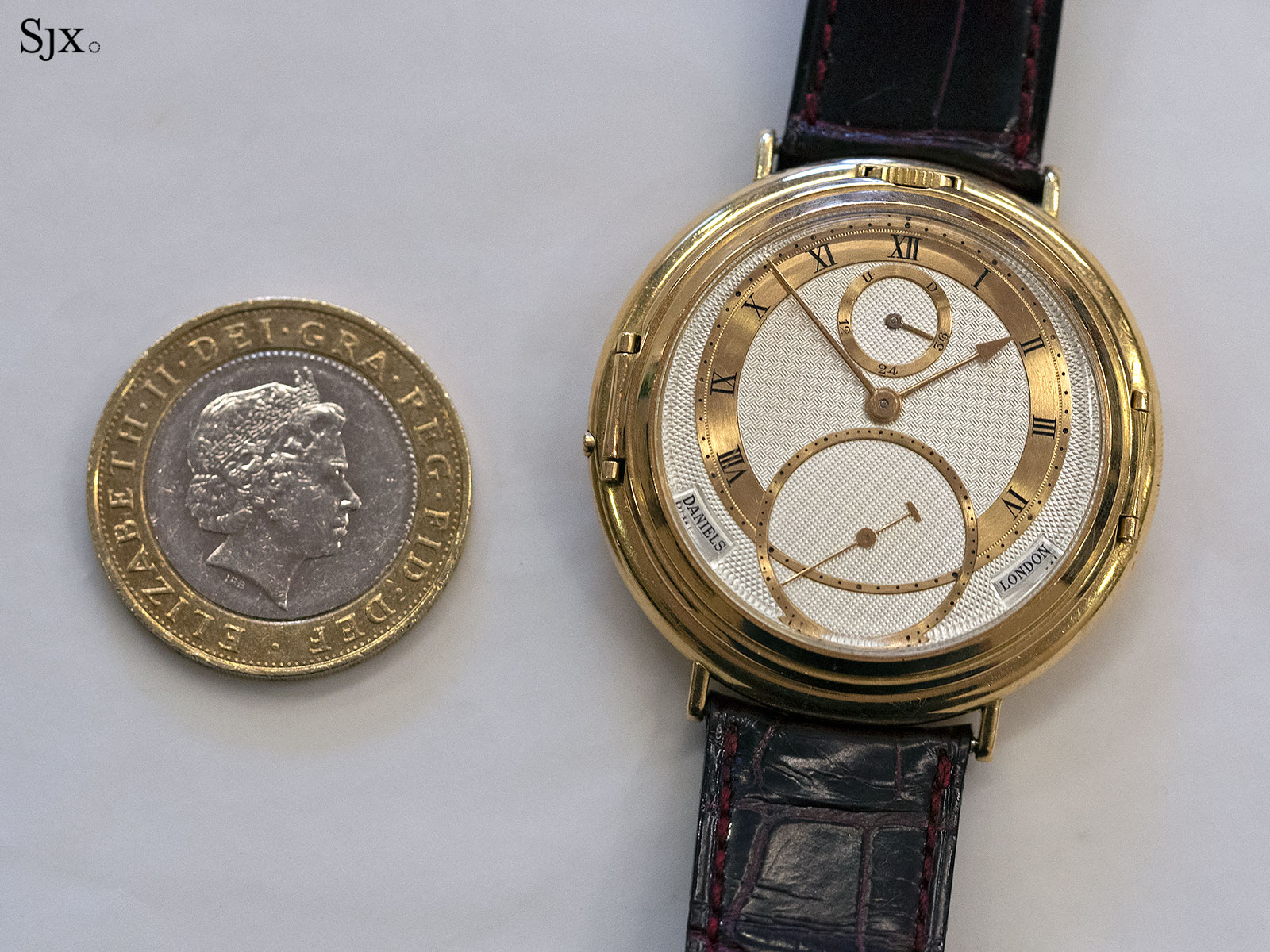
It was a challenge for the former owner to acquire the watch, as related by the current owner:
“After many years of several unsuccessful attempts to contact George through the Worshipful Company of Clockmakers, [the former owner] was finally put in touch with George via Roger Smith… He visited Riversdale where George lived and had his workshop. He sought out George because he read an article about his work and he felt he had to meet him.”
“They became friends and met on several occasions for meals when George was in London, sometimes at the Royal Automobile Club on Pall Mall and sometimes at his home. Throughout this time he repeatedly asked George if one day he might purchase one of his watches. Finally, some year or so after they first met, George agreed to sell him the Spring Case tourbillon watch that he was wearing at the time. This was in 2006.”
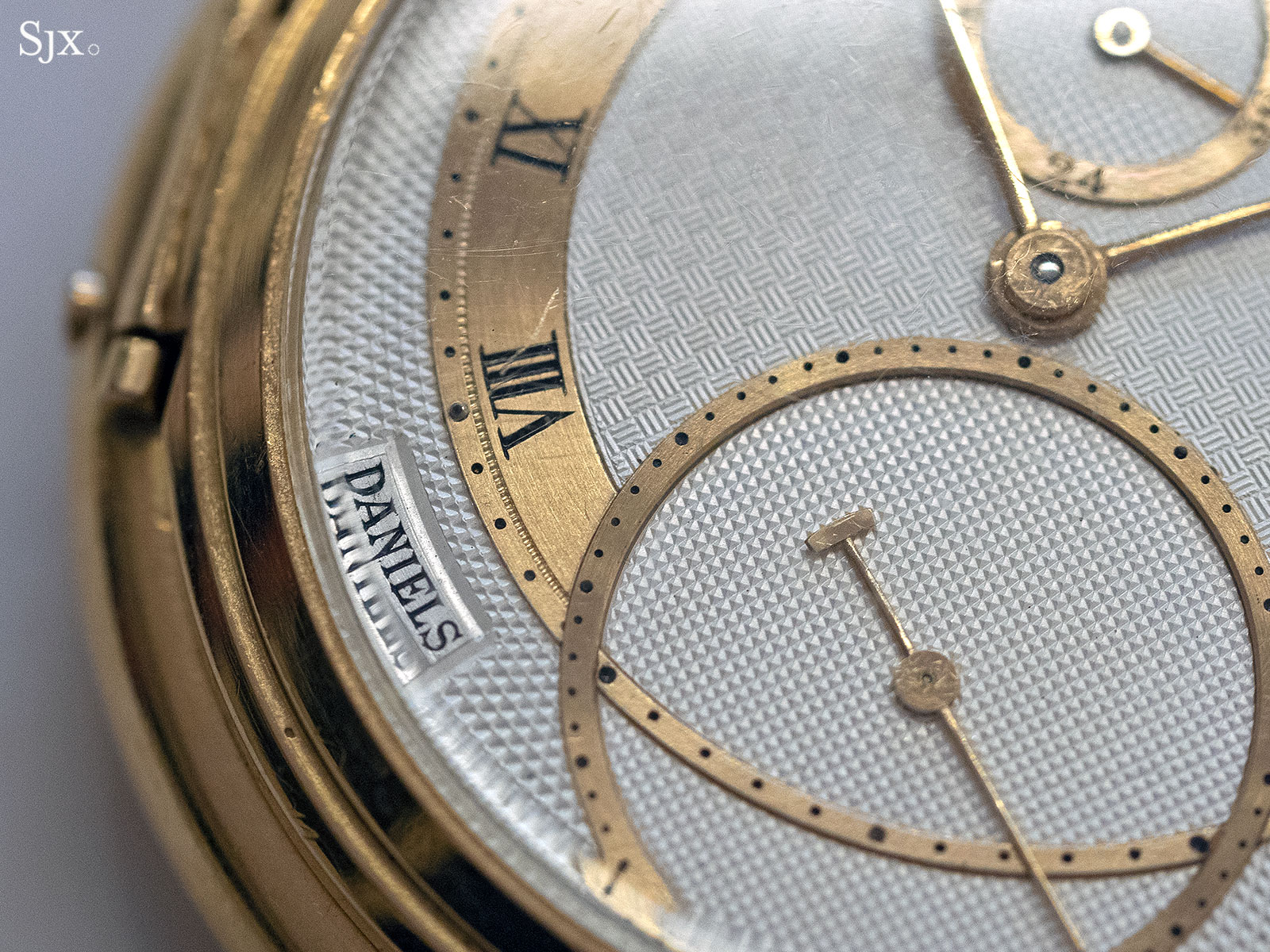
The Spring Case watch is a masterpiece of understated horology. It’s yellow gold, 42mm in diameter and in typical George Daniels style, which is to say English watchmaking blended with Breguet influences, and a healthy dose of genius.
It is disarmingly simple on the front – the dial is solid silver and engine-turned dial with three different patterns, while the lance-shaped hands and applied chapter rings are solid gold.
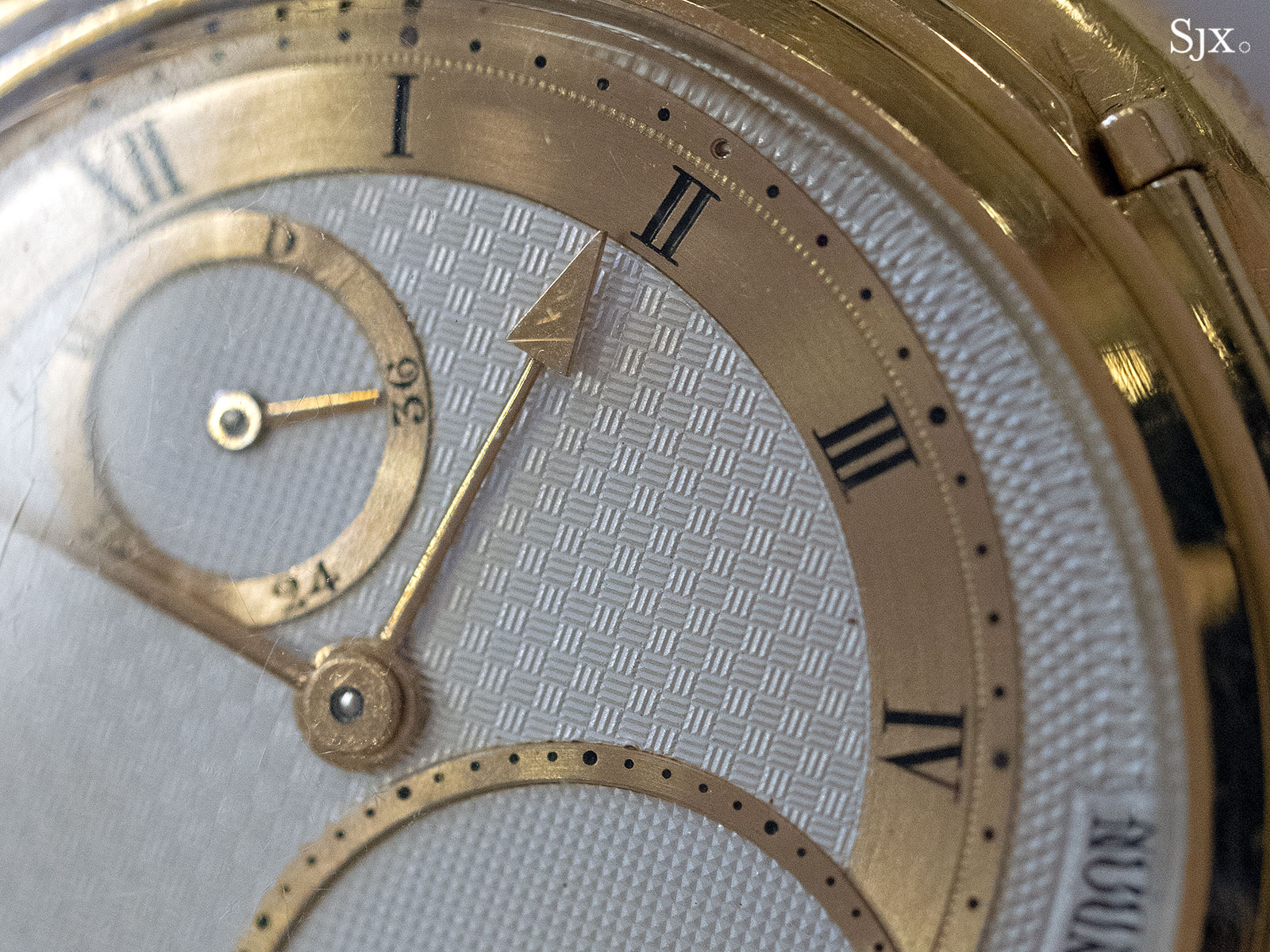
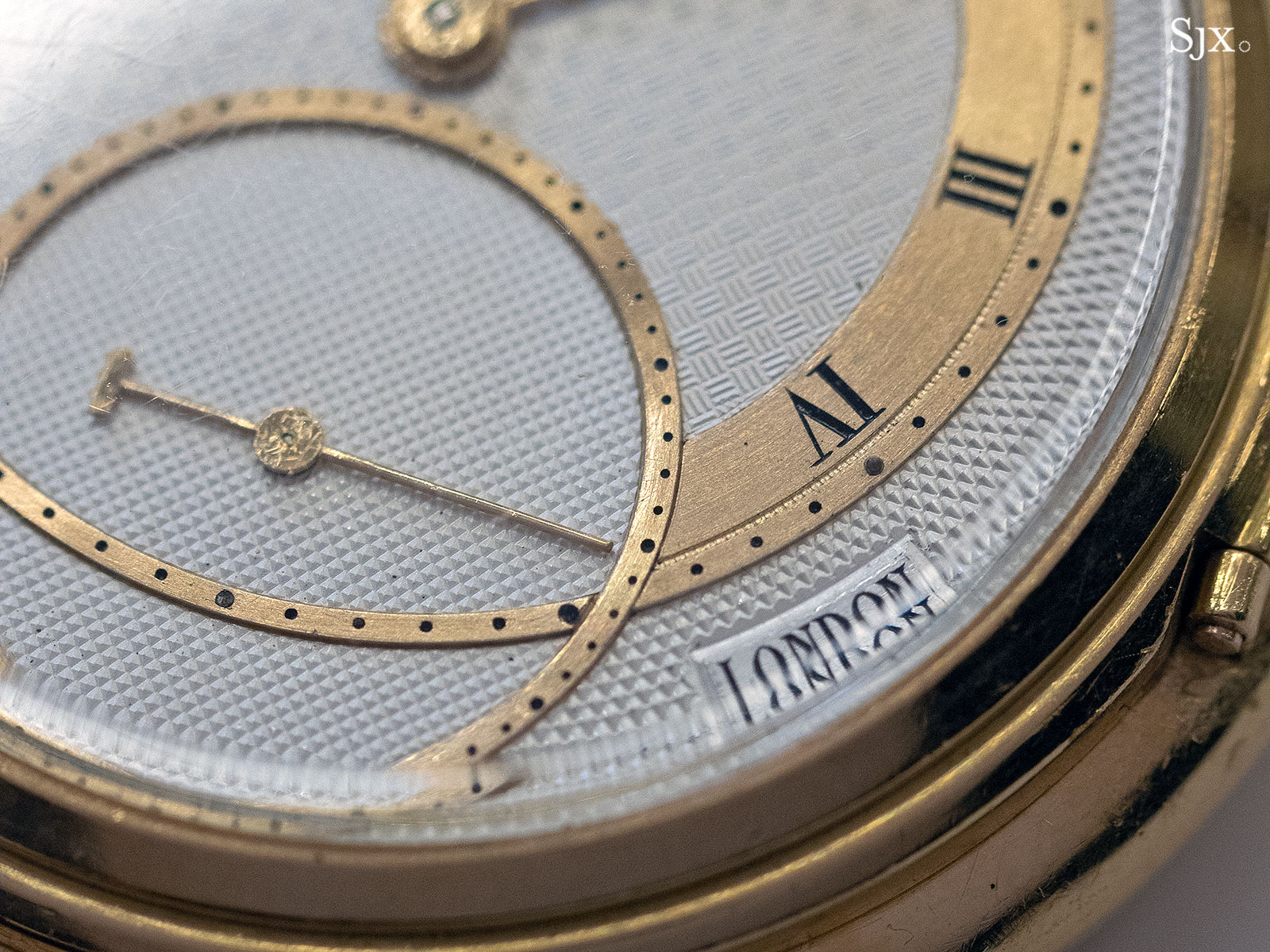
“George’s goal was to create an elegant and outwardly uncomplicated looking watch, and yet was packed full of his genius,” says Roger Smith, who remembers this watch well, “He disliked the trend for complications which cluttered the dials and made telling the time very difficult.”
On the front the watch reveals nothing but the time, in a layout reminiscent of later George Daniels wristwatch. The hours and minutes in the centre with the seconds in an oversized sub-dial, and the power reserve indicator at 12 o’clock, driven by a differential mechanism under the dial. The “U” and “D” on the power reserve display stand for “up” and “down” respectively.
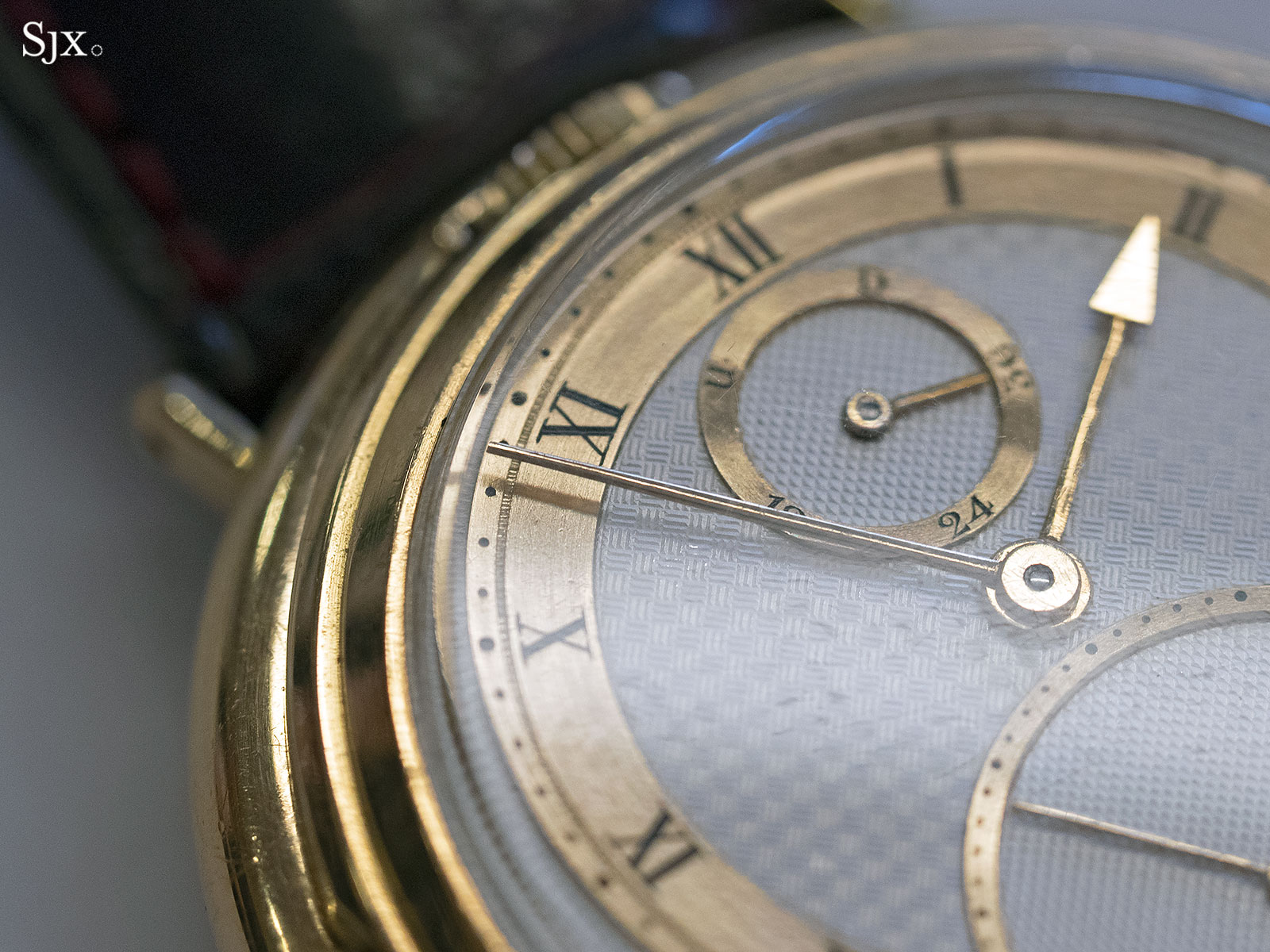
It then gets interesting on the back of the watch, which has a second dial finished with two guilloche patterns. Twin registers indicate the calendar, with the day at two o’clock and the date at 11, both set via pushers integrated into the case band.
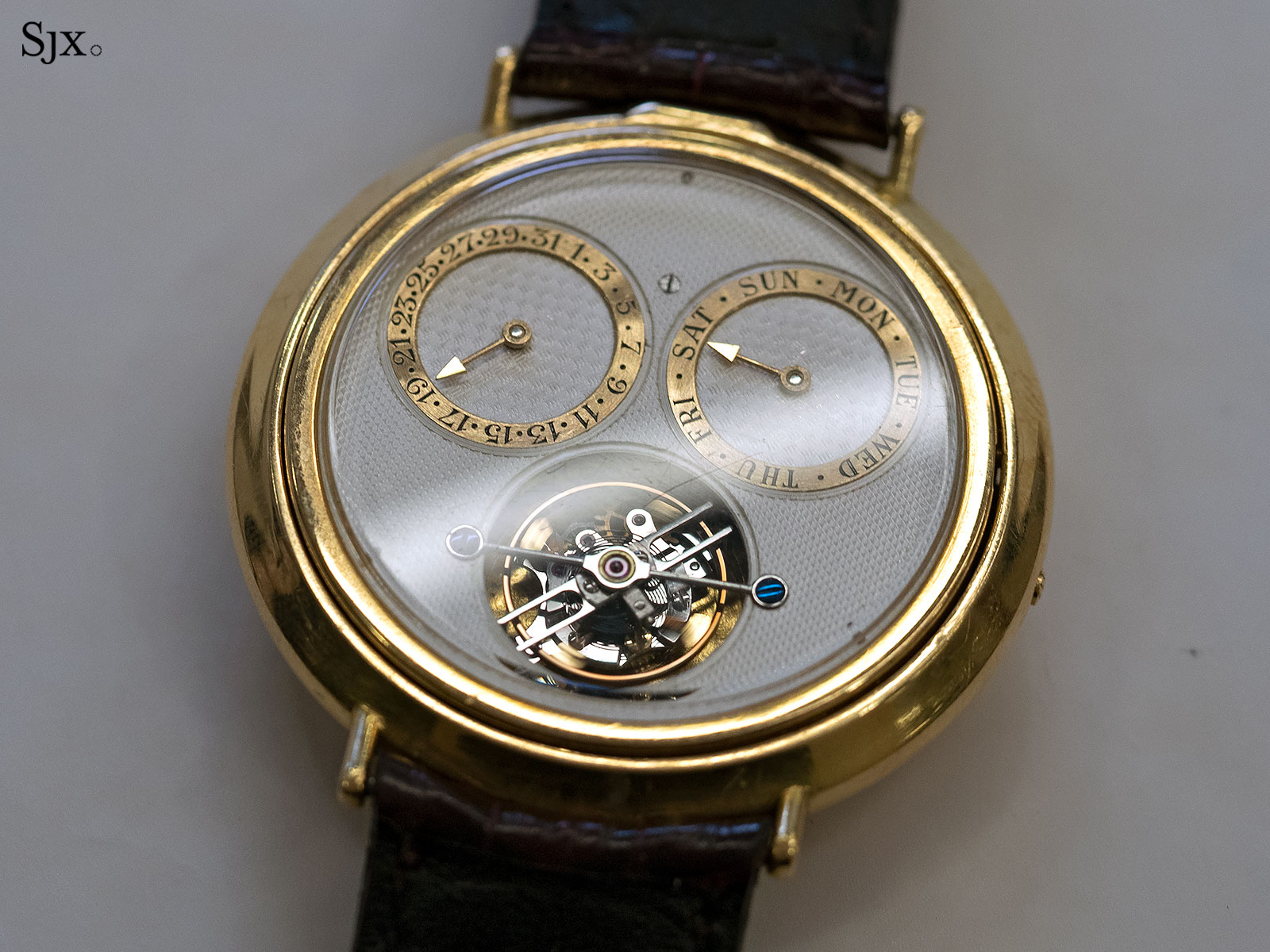
At six o’clock sits the centrepiece of the whole affair, a compact, one-minute tourbillon. With both its cage and bridge in polished steel, the tourbillon features a Daniels “slim-line” Co-Axial Escapement, variable inertia balance wheel with adjustable gold weights, as well as a hairspring with a Breguet overcoil and terminal curve. Modest as his style of watchmaking was, Mr Daniels incorporated the tourbillon just to show off a little.
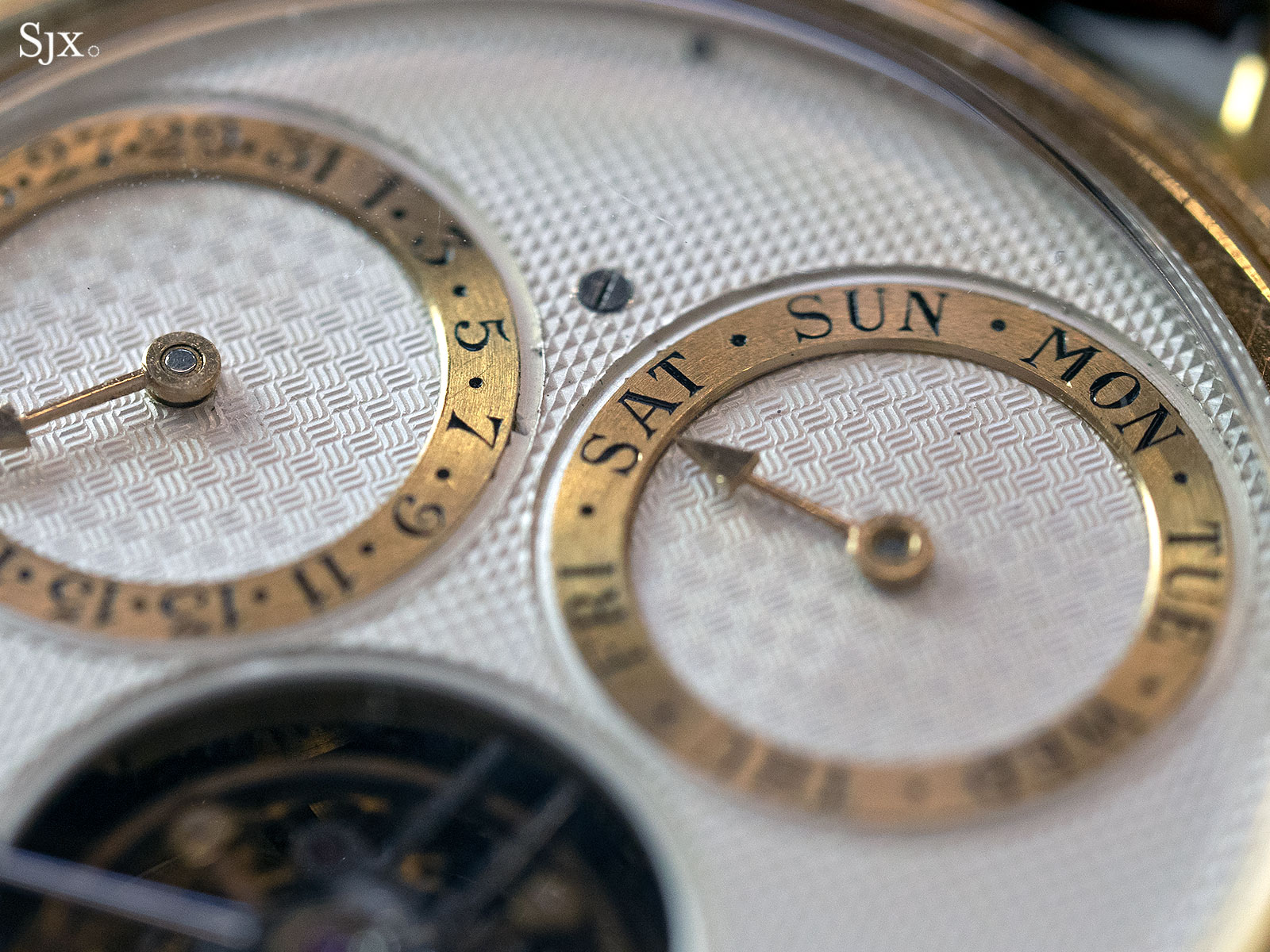
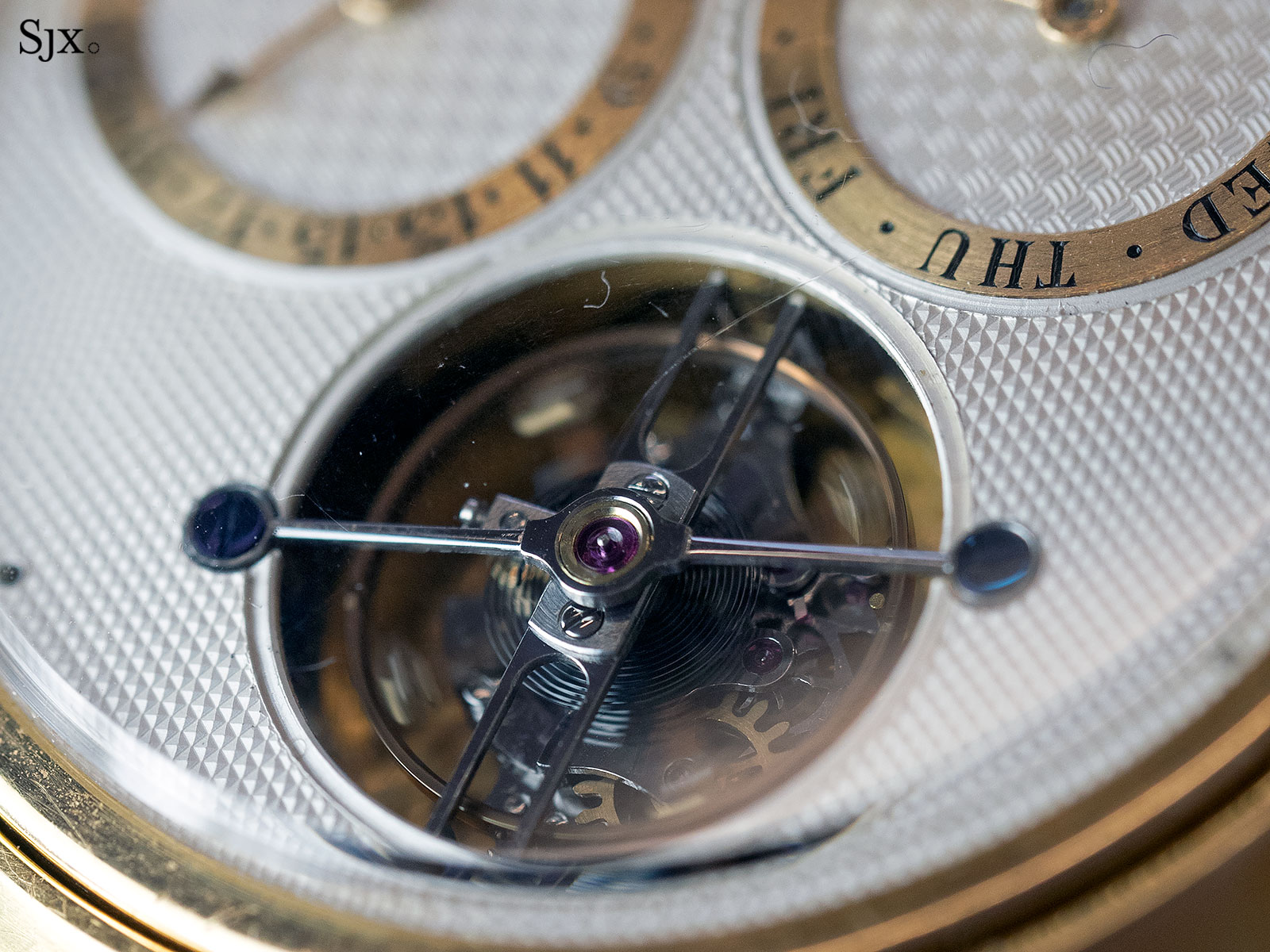
“History tells us that the finest timekeepers, namely marine chronometers, with their minimal number of components and a single train of gears will, in the long term, far outperform any mechanical timekeeper with complications,” says Mr Smith.
“The tourbillon was there purely for bragging rights”, continues Mr Smith, “A tourbillon is a wonderful feature to see in any watch as it will give the owner great pleasure in watching it make its rotation and a deeper appreciation of the skill of the watchmaker.”
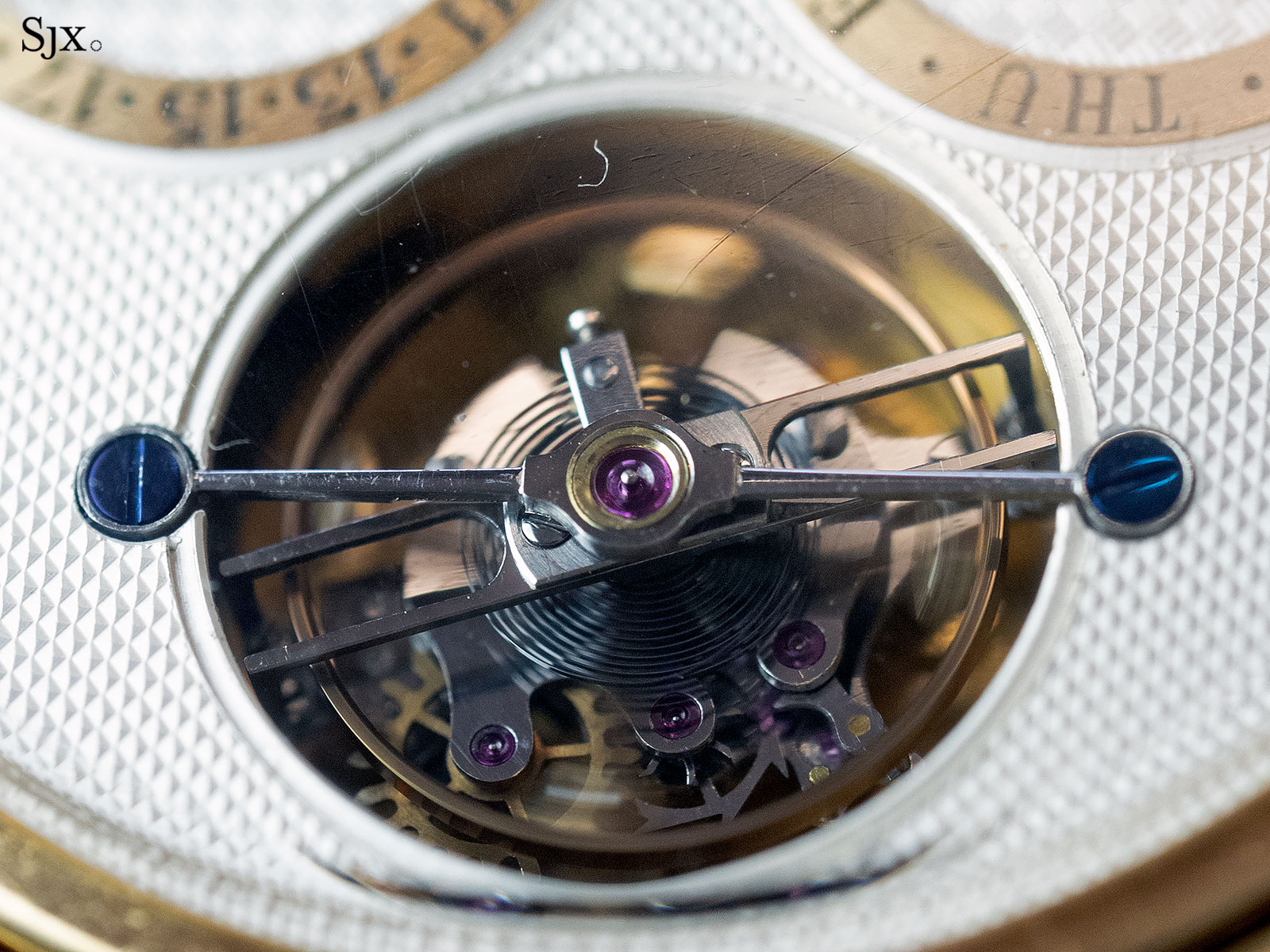
While the movement is highly complicated, the case is equally impressive in its inventive simplicity. As he did with his pocket watches, Mr Daniels fabricated all his wristwatch cases on his own, including the Spring Case.
The case is made up of two key components, an inner case holding the movement and an outer case with the lugs. A hinge at three o’clock secures the inner case to the outer one.
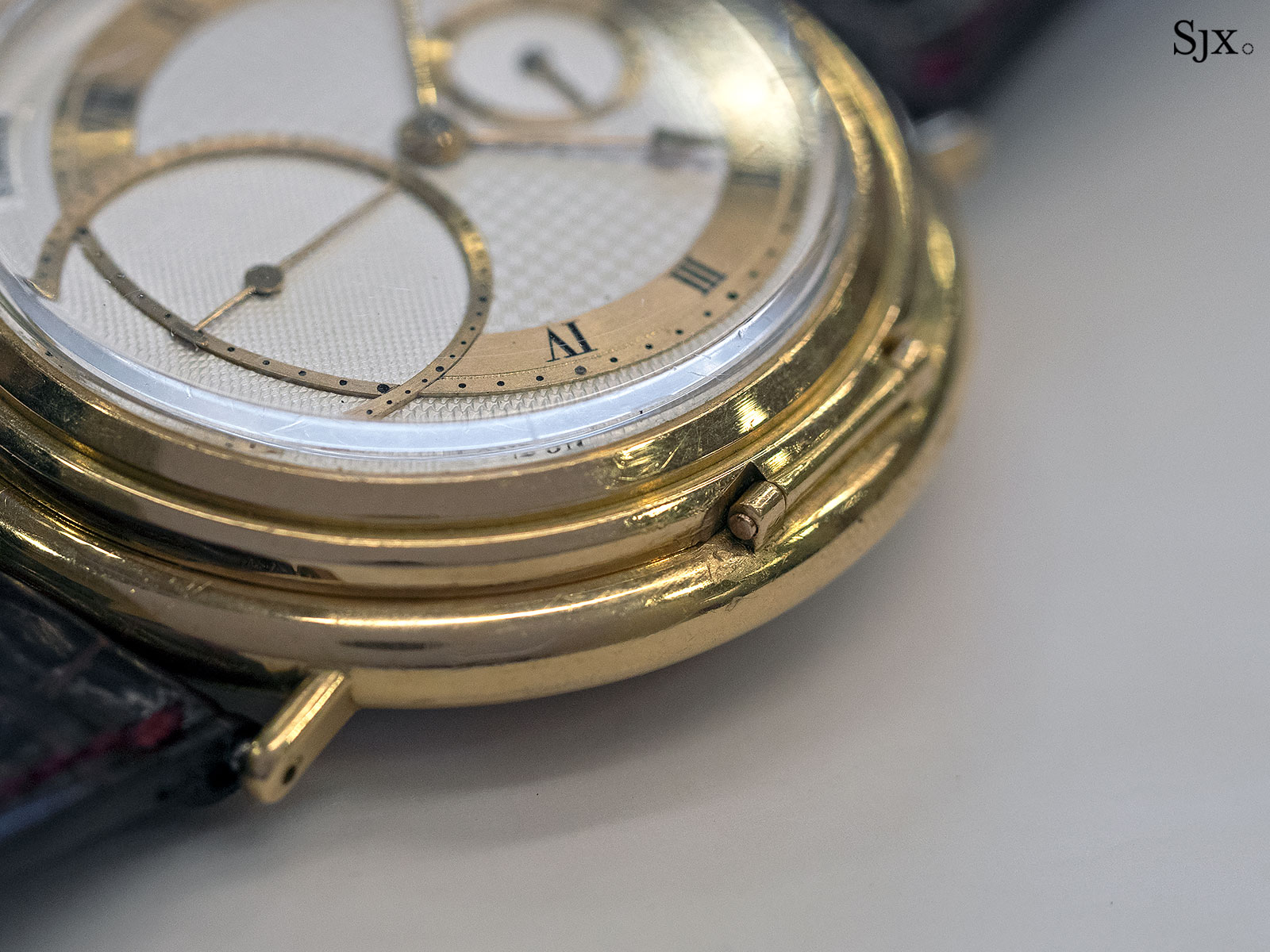
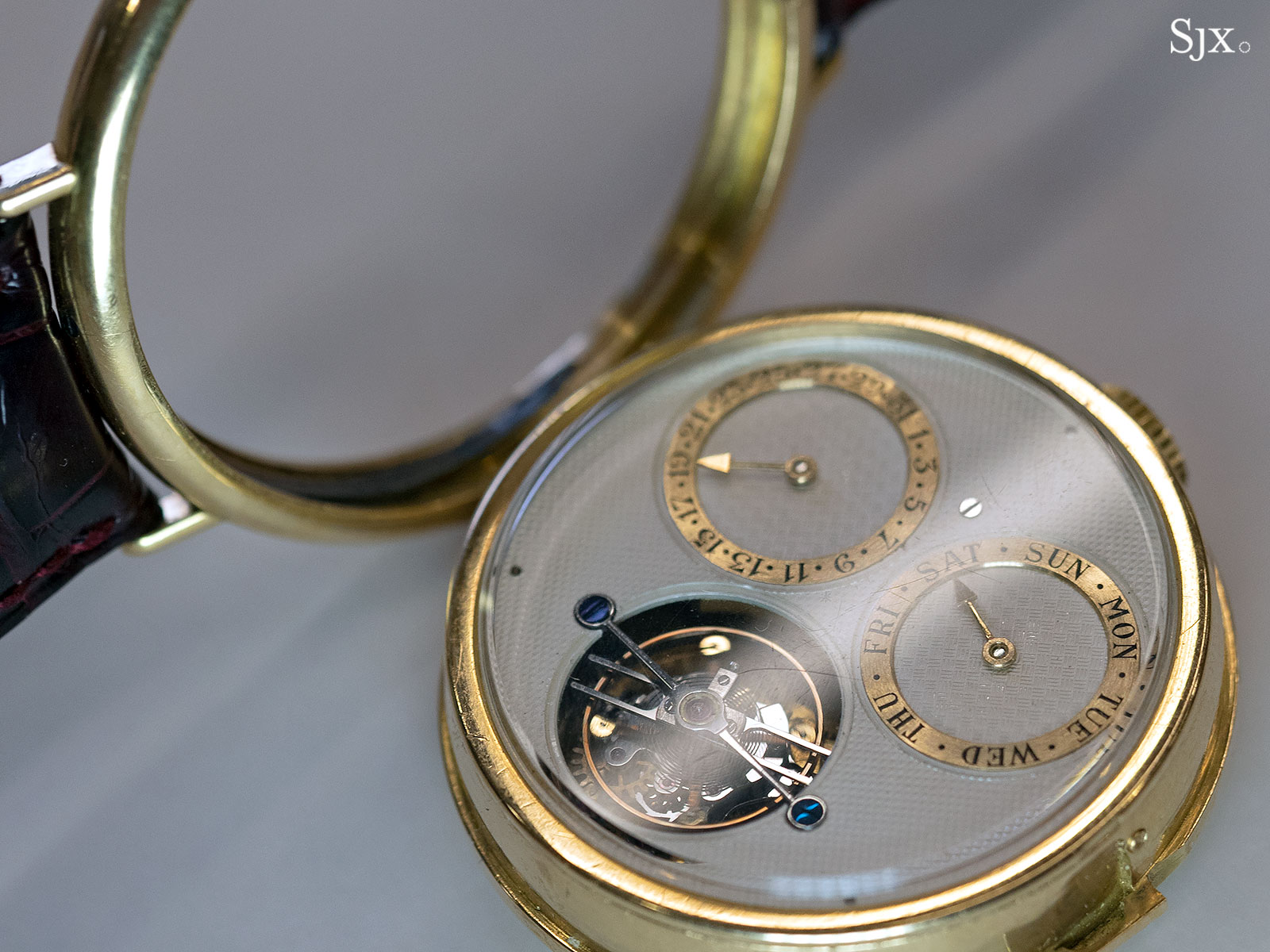
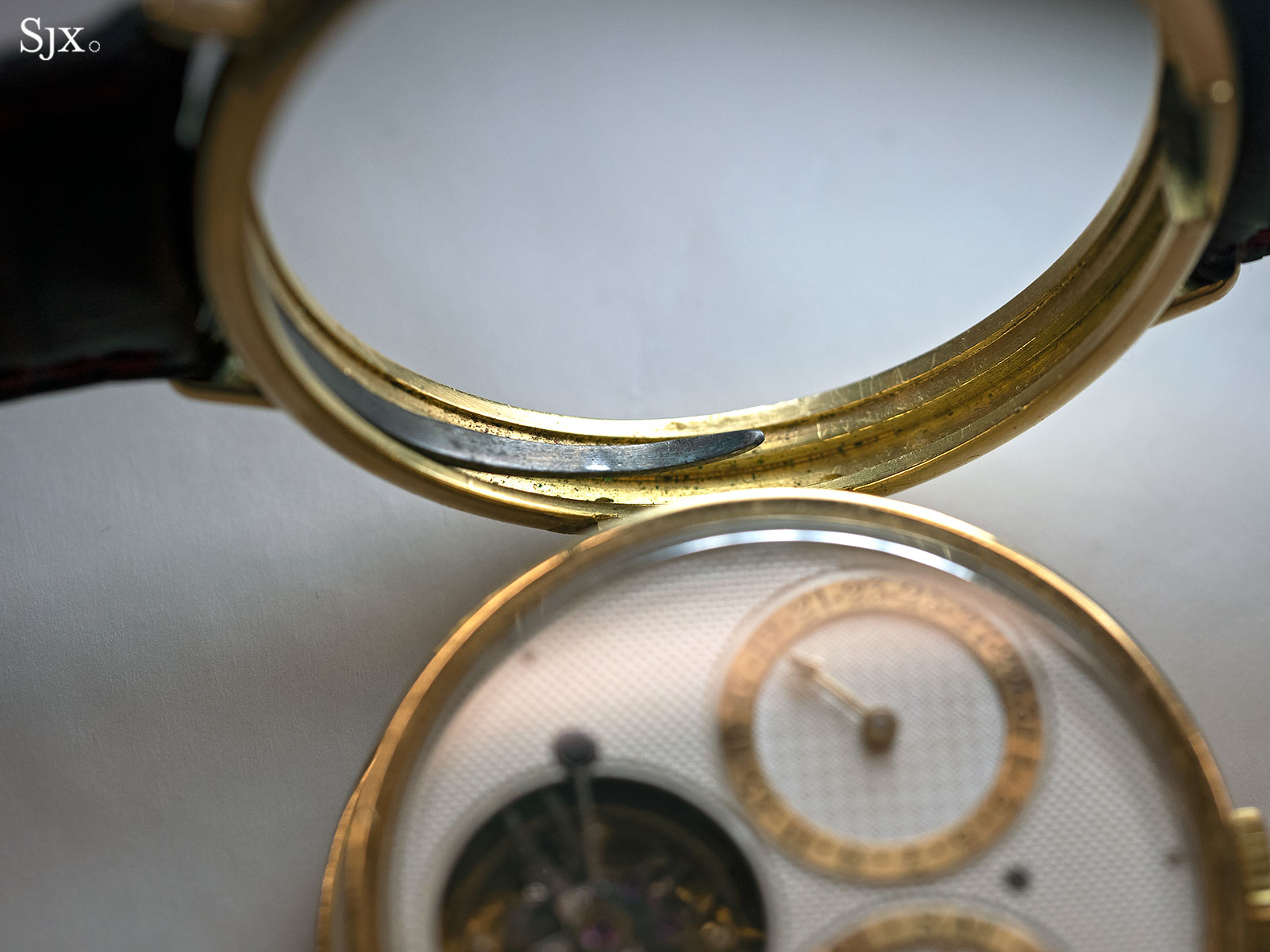
The inner case can be popped open to reveal the reverse face while the watch is on the wrist – the configuration is for conventional left-handed wear – thanks to an graceful curved spring that runs alongside the inside circumference of the outer case.
As a consequence of the double case, the watch is 42mm and larger than other Daniels wristwatches of the period – the Millennium was 36mm while the Anniversary was 40mm – making it substantial enough to look like a strongly modern wristwatch. And Mr Daniels smartly gave the case a gently sloping profile, which leaves it sitting elegantly on the wrist. It’s worth noting the Four-Minute Tourbillon wristwatch is the same case diameter and has a similar profile, but is not swivelling.
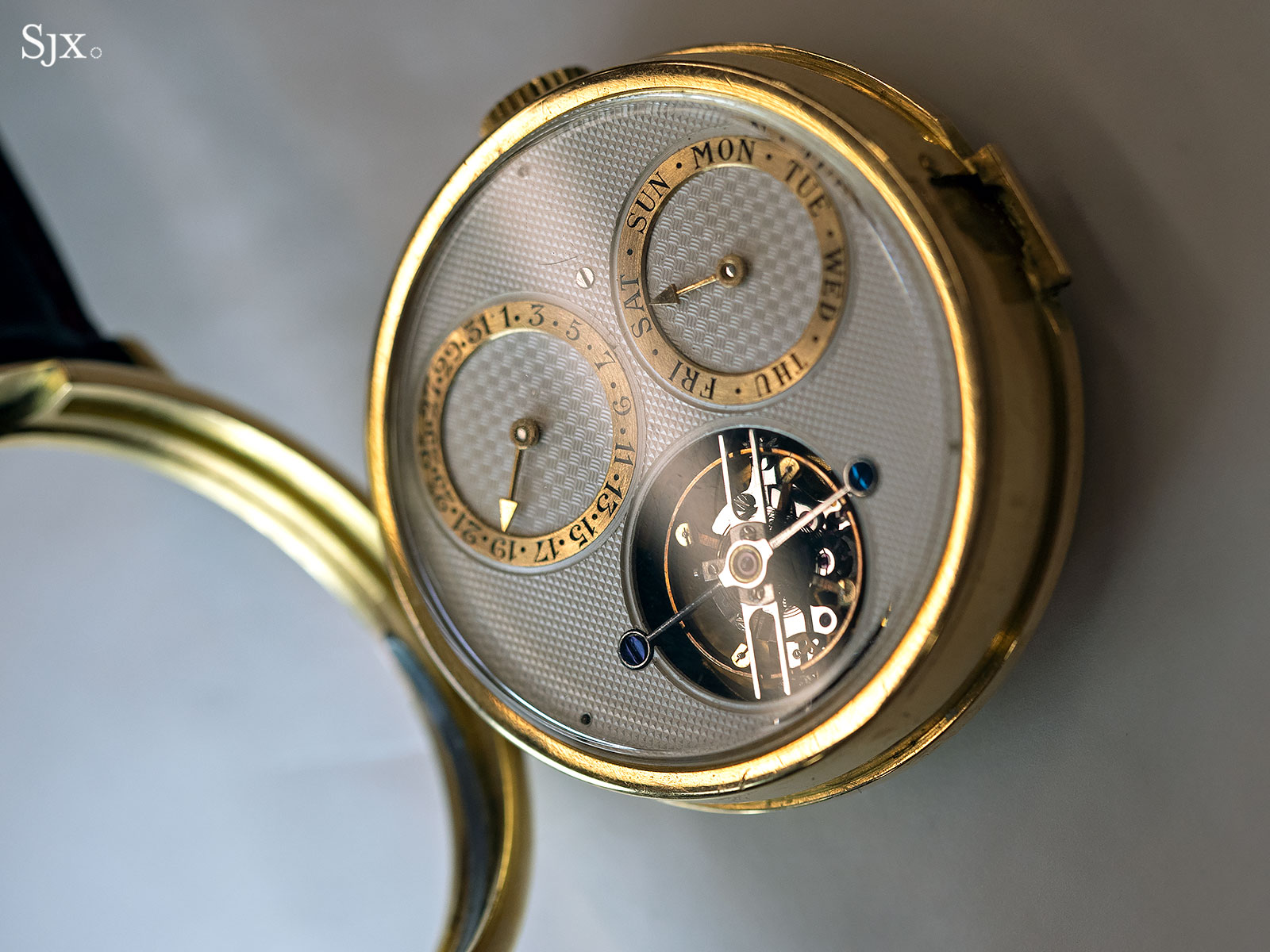
Beyond its intrinsic technical quality, the Spring Case has tremendous character, a history revealed in scuffs and scratches that tell the story of how it was hand-made by a man nearing 70 years old.
“The watch was serviced by myself approximately 10 years ago, and the marks on the hands and dial are as the watch left the Daniels workshop. It was important that I did not improve on what George had created,” explains Mr Smith.
“At the time of making, George was no longer a young man [being 66 years old then] and his focus during this period was purely a technical one, preferring to focus his energies on solving horological problems – this watch is one of those perfect examples.”
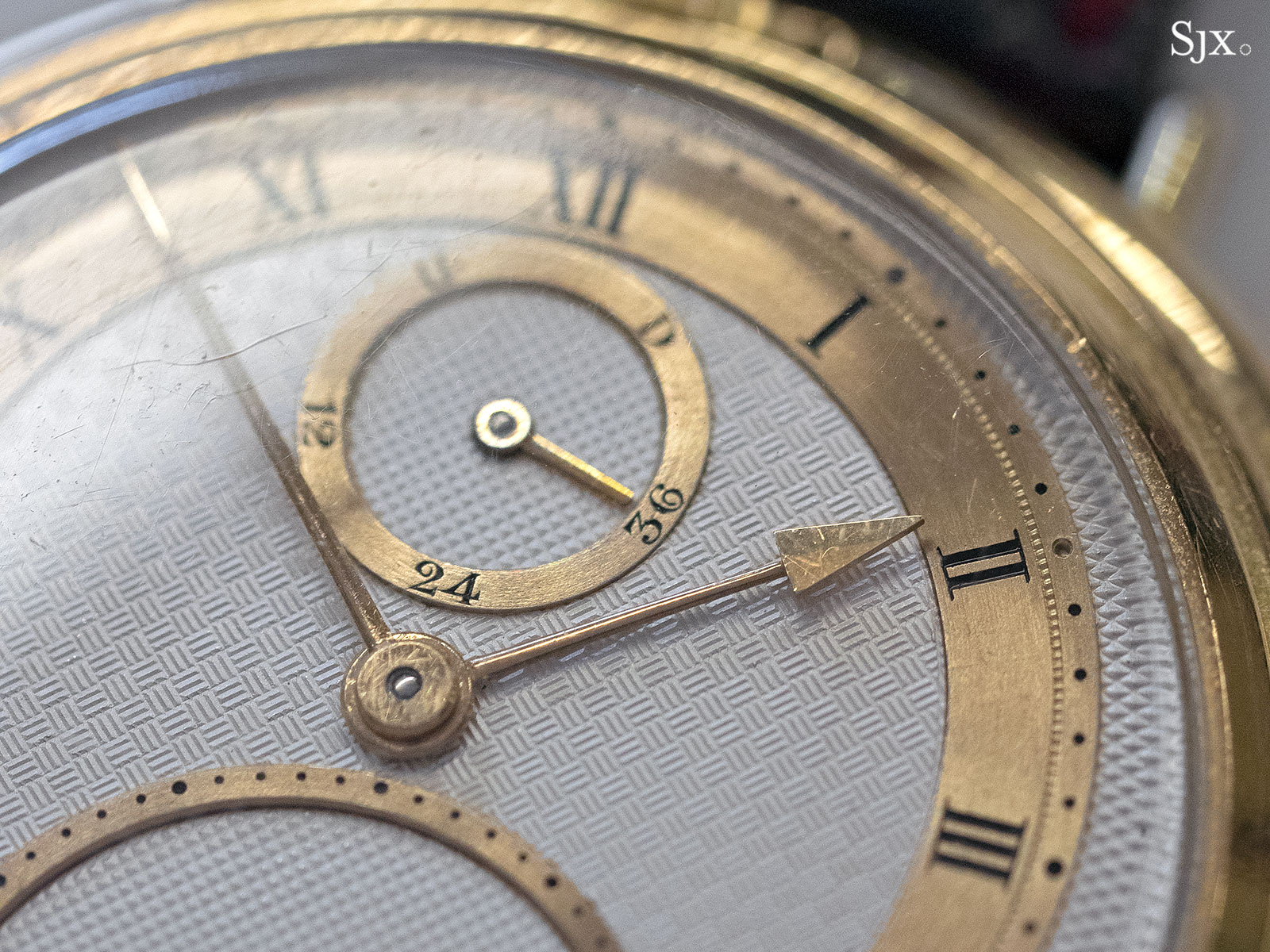
While most of Mr Daniels’ creations were pocket watches, his talent was all encompassing. “The one thing that George had in abundance was an innate understanding of mechanical watchmaking in all scales,” says Mr Smith. The Spring Case is paradoxically one of the simplest looking yet most significant wristwatches in independent watchmaking, and proof of Mr Daniels’ rare genius.
Back to top.

